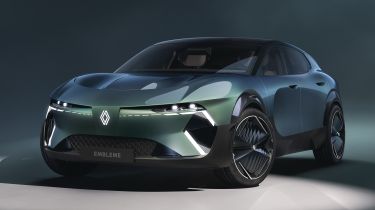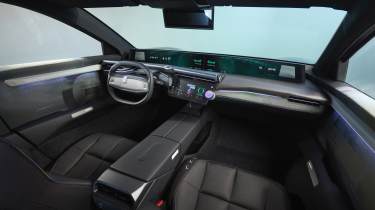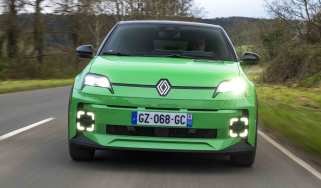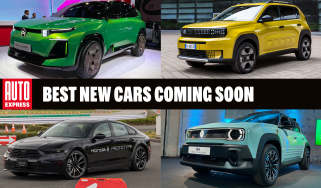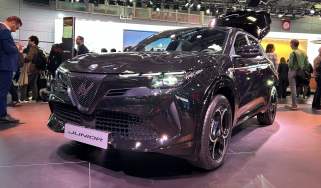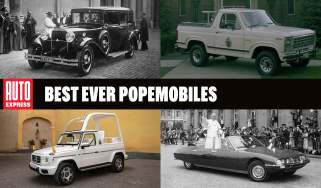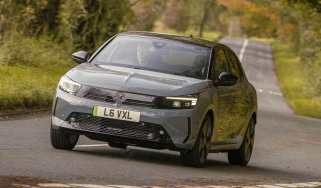Renault Embleme: hydrogen range-extender to get “next-generation platform”
First look inside Renault’s future EV as CEO Luca de Meo calls it a “masterpiece”
Renault has dropped the strongest hint yet that its radical Renault Embleme concept will make production.
Speaking at Ampere day at Renault’s “ElectriCity” Douai Plant in France, CEO of the Renault Group and Ampere, Luca de Meo said, “you might think Embleme is just a concept, but if you know me, you know that whenever I put something on a stage, I tend to do it in the end.”
A C-segment car that looks wildly different from the retro-inspired Renault 5 and newly-revealed Renault 4, the Embleme utilises a hydrogen range-extender to power its electric battery with range of up to 1,000km (620 miles) possible. No electric charging would be required either, though Ampere admits the hydrogen powertrain relies on the infrastructure becoming more commonplace – with the hope hydrogen-powered commercial vehicles like the Renault Master H2-Tech will kickstart this growth.
Rather than utilise a version of Ampere’s AmpR small platform found on the Renault 5, 4 and the upcoming Twingo, the Renault Embleme will sit on a “next-generation, C-segment platform” according to de Meo. The concept is built on a version of the incoming AmpR Medium platform, which will be the basis of a number of future production models.
That powertrain is a clever hybrid of a battery electric propulsion under most circumstances, with the addition of a small liquid hydrogen fuel-cell that can act as a range extender. The compact 40kWh battery pack and rear-mounted 214bhp e-motor are capable of driving the Embleme for ‘several hundred kilometres’, says Renault, with the fuel-cell further adding around 350 km (217 miles) to the overall range. Pascal Tribotte, product manager for Renault, told Auto Express that the firm “does not believe in full-hydrogen, like the Toyota Mirai”.
This combination could potentially deal with the opposing forces of alleviating range anxiety and retaining zero-emission driving in one fell swoop, because the fuel-cell’s only emission is water. It also helps bring down the car’s weight, with all the added efficiency gains that come with it. Renault set itself a target of 1,750kg for the Embleme, hundreds of kilos less than a similarly sized electric car.
A focus on reducing carbon emissions is portrayed throughout the concept’s manufacturing, too, with Renault claiming that the Embleme’s total CO2 emissions over its lifecycle is reduced by as much as 90 per cent over those of a similarly sized EV. “An average ICE car has a 50 tons footprint: for Embleme, it’s 5 tons, cradle to grave. It’s a masterpiece”, said de Meo. To achieve this level of sustainability, the Embleme has extensive use of recycled and recyclable materials, along with new processes for constructing the steel used on the car’s body and a new battery chemistry.
But beyond the tech, one can’t help but first notice the striking design that takes a distinctive turn away from the retro design of the 4 and 5. Instead, it has a more contemporary look, with only a few references to historic Renault design elements, such as the placement of the digital badge up front.
Aerodynamic efficiency has also been a top priority. With a bit of help from the Alpine F1 team, the concept has lots of trick devices placed across the front, rear and side to help streamline the body and further improve the car’s overall efficiency.
Inside there’s a huge display that stretches the width of the car – met by two digital side view cameras to replace the wing mirrors. There’s a touchscreen in the centre, though a single swipe can make this disappear for a cleaner, uncluttered look. Renault says the hydrogen powertrain results in no impact on interior space and sitting inside the concept it feels roomy enough for a car of this segment.
Renault also says it will build its first “software-defined vehicle” by 2026, which would feature a greater focus on over-the-air updates and digitisation to keep the car feeling fresh throughout its lifespan. Though the Embleme is not referred to as an ‘SDV’ we expect it would receive this development – thanks to Ampere’s Google and Qualcomm partners.
Click here for our list of the best hybrid cars on sale right now...

